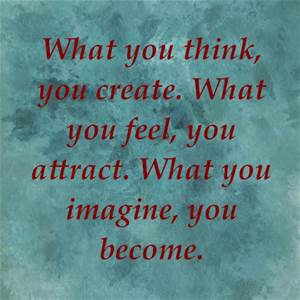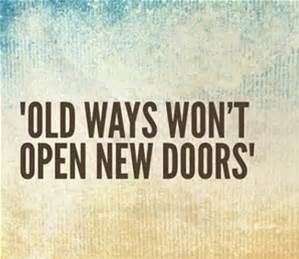
For the past two weeks, this blog has been exploring the parallels with the transitions of change and The Velveteen Rabbit. This week, we are going to focus on specific strategies to help with the three stages of transition: ending something, roaming the wilderness, and new beginnings/vision.
All change begins with an ending. Why is ending something important when dealing with change? To get what one wants, one must give up what is. Giving up what is (whether willingly or unexpectedly) means the loss of something: loss of familiar routines, loss of a familiar way of doing something, loss of a relationship, loss of a comfort zone, perhaps even loss of control, space, power, social/role identity, or influence. It is important to accept this sense of loss and the emotions felt because of the loss: anger, resentment, sadness, and resistance. In order to be able to fully let go and embrace what the change brings, the acceptance of the loss, of the end of the current, is vital. 
How do you develop the ability to accept the end of something?
Acknowledge the loss. Talk about the loss with others. Talk about what the loss means. Communicate the feelings the loss is generating.
Grieve for what has been lost or what has been let go. While everyone grieves differently and more like a roller coaster than in discreet stages, the stages in the Kubler-Ross model are a helpful guide. Those stages are: denial, anger bargaining, depression, and acceptance.

Use rituals to help overcome the loss. A commonly used ritual is a party: birthday, retirement, farewell, New Year’s Eve, wedding showers, bachelor parties, funeral wakes.
Ask questions: who, what, when, how, why. Who will be affected by this? What is going to happen? When is it going to happen? How will all this happen? Why is it going to happen?
Remember, to get what you want, you must give up what is. In order to be able to fully let go and embrace what the change brings, the acceptance of the loss, of the end of the current, is vital. You need to let go of the past in order to accept change and adjust to life so that you can remain optimistic and create the future you want. As Louise Smith said, “You can’t reach for anything new if your hands are full of yesterday’s junk.” 
The second stage of transition is roaming the wilderness. The wilderness is a place where the old and the new overlap. In the wilderness, there is a lot of confusion with new sights, sounds, and experiences. The rules that were followed in our former environment no longer apply, yet new rules for this new environment, this “wilderness,” have not yet been established. There is often a fear of the unknown in the new, the changed environment. There may also be a sense of excitement that sometimes does accompany something new. It is out of all of these experiences that new ideas, new discoveries, reorientations and creativity take center stage and help propel us toward something we might be able to accept, something that makes sense out of the change, something that will put us on the path to our becoming “real” within our new reality.

But, how can one “roam the wilderness” safely? How does one develop this skill?
Experiment with the ideas that come to the surface. Use trial and error in deciding what to do, what direction in which to go, who to see.
Reward and reinforce. After trying something, whether it is a success or a failure, give the thumbs up or words of encouragement. Treating oneself or others to something is a nice acknowledgement of the efforts. Giving out something that is symbolic of whatever was tried provides a reward as well as a visual reminder of the effort.
Be patient. Give others and oneself time to work through the thoughts, ideas, and suggestions. Periodically step back and evaluate all that has been going on while roaming the wilderness.
Talk, talk, and talk some more. Talk about feelings, fears, frustrations, anxieties, and ideas.
Be observant. Watch for “footprints in the snow” or those signs of how things are evolving. Capitalize on the moments of creativity.

Set short-term goals. Where do things need to be in a day? A week? At the end of the month? What should things look like in a day, week, or month?
The third and final stage of transition is the new beginning. It is here that everything comes together. The old or former merges with the ideas from the wilderness and becomes transformed into a new identity, understanding, value, or attitude. After negotiating the wilderness, we do need direction so that we can be successful in our new beginning. Vision provides this direction. Vision is the image of what we want the future to look like. The vision provides purpose and meaning and in doing so, gives hope, enthusiasm, importance, and inspiration to what we want to accomplish or what we want to be.

What can we do to develop further develop the skill of handling “new beginnings;” this strategy of vision?
Articulate the vision. I like to ask workshop participants what their idea of a perfect day is. Many have to really stop and think before they can answer. If one doesn’t know what their perfect day looks like, how will it ever be recognized or appreciated when it arrives? It is the same with vision. The vision, the direction, the goal must be clear and identifiable and one must be able to talk about it, share what it is with others.
Develop a plan to reach the vision. Write down, step-by-step, how the vision can be achieved.
Implement the plan of action. Get involved and stay involved. Provide incentives as needed.
Celebrate successes when milestones have been reached in the plan’s implementation. Do something that has meaning and that will feel like a reward.

Just as the Velveteen Rabbit allowed himself to experience all three stages of the transition of change and just as he was able to achieve his vision, his goal of becoming REAL, so can we when change enters our lives. If we remember to embrace the change and accept the ending it has brought; if we remember to allow ourselves to experience much, to talk to wise and sensible people, and to seek the magic in things and people while we roam the wilderness; and if we remember to have a vision of what we want, we will be able to move to a new beginning.

When change moves us out of our comfort zone and we struggle with where we are going, it is important to have a dream, a vision of what we think we want. While roaming the wilderness or the neutral zone, we need to allow ourselves to experience much, to talk to wise and sensible people, to seek the magic in things and people. Given time, we will emerge from the wilderness, ready to move in the direction of our vision, our goal; our dream. And, we can do so with hope, enthusiasm, and inspiration.

Remember the Skin Horse’s advice to the Velveteen Rabbit: “Real isn’t how you are made. It’s a thing that happens to you. … It doesn’t happen all at once. You become. It takes a long time.” Give yourself time when change rocks your world. Your “real” will happen in due time.
